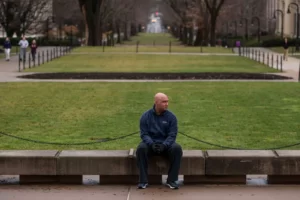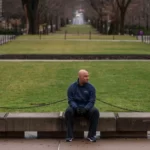Sam Roe, Ray Long and Karisa King of Chicago Tribune won the 2017 Barlett & Steele gold award for “Dangerous Doses.” Their two-year investigation exposed the failure of U.S. pharmacies to adequately warn patients of potentially dangerous drug combinations, and its publication resulted in major reforms in corporate and government policies. Here’s how they did it.
More and more Americans are taking multiple prescription medications. Twenty percent take three or more drugs; 11 percent take five or more – twice the percentage seen in 1994.
Many drug combinations are safe, but some are potential harmful, even fatal. Tens of thousands of people are hospitalized each year because their drugs interacted with one another.
Dangerous drug interactions have been a major public health problem for decades. Yet there has been alarmingly little effort by lawmakers, researchers and the medical community to address the risks.
The Chicago Tribune wanted to examine the issue, and our team decided to focus on pharmacies, the last line of defense against the threat. Pharmacists are responsible for flagging dangerous drug interactions and warning patients. It’s one of their primary duties.
But are they doing a good job? And how could we assess their performance?
These questions were difficult to answer. Few documents were available for review, and the scientific research on the problem was startlingly thin.
So the Tribune decided to conduct its own research, launching a testing project that would become the most extensive of its kind. Journalists from throughout the newsroom would go into pharmacies with two prescriptions for drugs that should not be dispensed together without warning. Would pharmacists warn them?
Starting with science
From the beginning, we wanted our project to be scientifically sound. To select the drug pairs to be used in the tests, we consulted with two leading experts on drug interactions, Daniel Malone of the University of Arizona and John Horn of the University of Washington. Five drug pairs were selected, three of which posed life-threatening risks.
Writing the prescriptions was Dr. Steven C. Fox, a Chicago physician who treated many elderly patients and knew the risks of multiple medications firsthand.
Fox wrote the prescriptions in the names of Tribune journalists. At the pharmacies, the reporters did not identify themselves as Tribune staffers but used their own names and answered all questions truthfully.
Reporters Karisa King, Sam Roe and Ray Long led the project, with 15 other journalists from seven newsroom departments participating. Overseeing the project was George Papajohn, the investigations editor, and Kaarin Tisue, deputy investigations editor. The project also received support and insight from Publisher and Editor-in-Chief R. Bruce Dold and Managing Editor Peter Kendall.
Examining the ethics
After consulting with statisticians, the newspaper decided to conduct dozens of tests so that the results would be statistically meaningful. In the end, 30 tests were conducted at each of the top pharmacy chains in the Chicago area. Reporters also tested a randomly selected group of independent pharmacies.
The logistics were daunting, and the paper meticulously considered the ethical and legal issues raised by testing pharmacies and working with a physician to obtain prescriptions. The team conducted a legal review; interviewed scientists who have used similar research methods; and consulted the Tribune’s ethics policy and ethical guidelines from the Poynter Institute.
Testing did not begin until top editors were confident that the process met the highest journalistic standards. The Tribune went to such lengths because everyone believed deeply in the project’s public service mission. The team’s reporting suggested that if the paper didn’t pursue the story, patients might be harmed unnecessarily. CJR wrote about the project here: https://tinyurl.com/jepg2et
Reporting the results
After two years of work, the results were in: 52 percent of the pharmacies tested sold the medications without mentioning the interactions. In test after test, the drugs were dispensed at a fast-food pace, with little attention paid to customers.
CVS, the nation’s largest pharmacy retailer by store count, had the highest failure rate among the chains tested, dispensing the drugs with no warning 63 percent of the time. Walgreens did the best but still failed 30 percent of the time.
The findings prompted major reforms in corporate and government policies. Some of America’s biggest pharmacy chains, including CVS, Walgreens and Wal-Mart, took significant steps to improve patient safety at stores nationwide. The changes cover 28,000 U.S. drugstores with the potential to impact millions of consumers.
The story also sparked Illinois Gov. Bruce Rauner to take numerous safety measures and prompted legislation at the federal, state and local level.
The actions represent some of the most important safety steps in years to address the escalating risk of patients taking multiple medications.
Response from grateful readers poured in. “Truly astonishing,” tweeted one. Emailed another: “That is journalism at its absolute finest. Your reporting has literally saved lives.”










